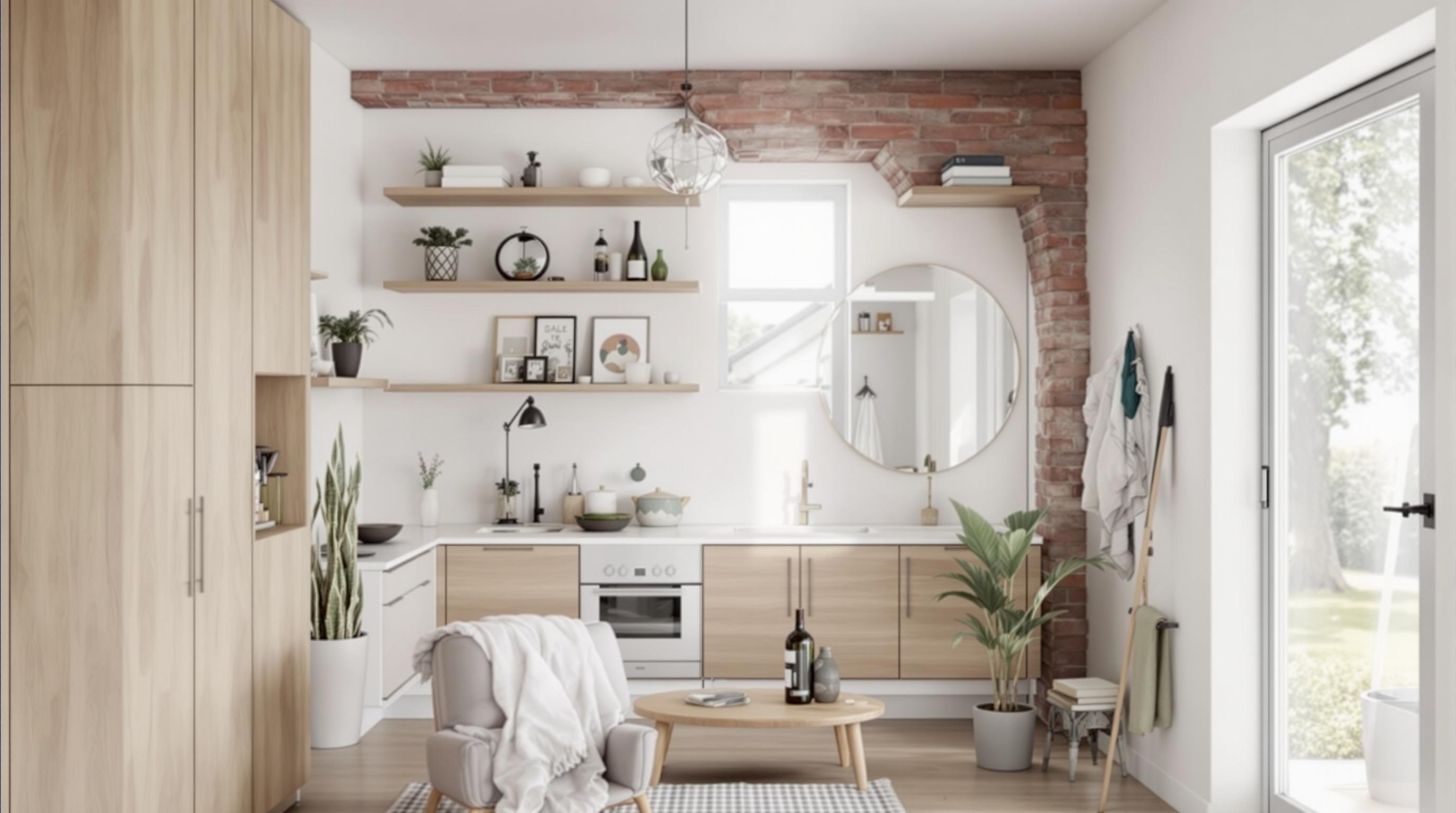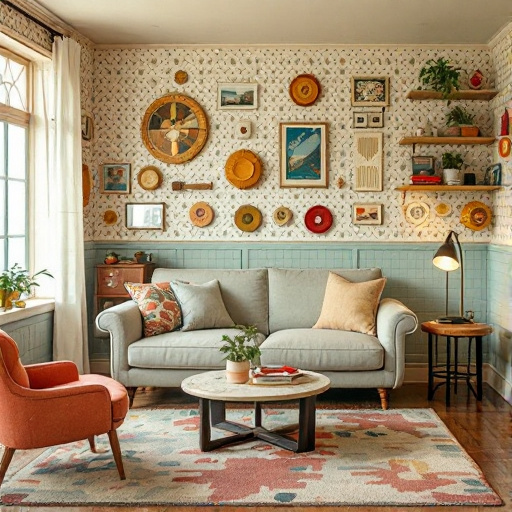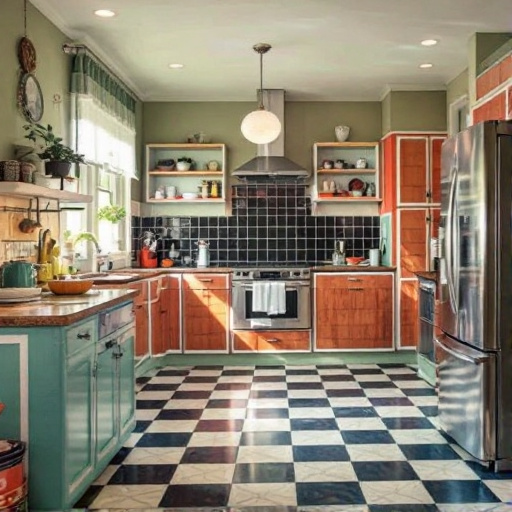Featured Articles
- Rethinking Space: How Biophilic Design in Home Remodeling Connects Us to Nature and Wellness
- Revamping with Resilience: How Home Remodeling Can Boost Your Mental Health and Well-Being
- Reviving Retro: How Nostalgia is Shaping Our Modern Home Remodeling Choices
- "Reviving Retro: How Vintage Decor is Shaping Modern Home Remodeling Trends"
- The Rise of Biophilic Design: How Integrating Nature into Home Remodeling Can Boost Your Well-Being
Top 8 Must-Have Smart Home Remodeling Innovations Launched in the Last 5 Years: A Detailed Buyer’s Guide
Top 8 Must-Have Smart Home Remodeling Innovations Launched in the Last 5 Years: A Detailed Buyer’s Guide
Top 8 Must-Have Smart Home Remodeling Innovations Launched in the Last 5 Years: A Detailed Buyer’s Guide
1. Smart Thermostats with Learning Capabilities
Smart thermostats have evolved significantly over the past five years, introducing adaptive learning technologies that optimize home heating and cooling. These devices, such as the Google Nest Learning Thermostat and Ecobee SmartThermostat, learn your schedule and preferences over time, ensuring ideal temperatures while minimizing energy waste.
By integrating with your smartphone and voice assistants like Alexa or Google Assistant, these thermostats offer seamless control both at home and on the go. Additionally, many models come equipped with sensors that detect occupancy and adjust settings accordingly to enhance comfort and savings.
Investing in a smart thermostat not only reduces utility bills but also contributes to more sustainable living, an important consideration for eco-conscious homeowners. According to Energy Star, households can save an average of 10-12% on heating and 15% on cooling costs with smart thermostats.
2. Advanced Smart Lighting Systems
Modern smart lighting systems have introduced innovations like tunable white lighting, adaptive brightness, and color temperature control. These features allow homeowners to customize ambiance based on time of day, mood, or activity. Philips Hue and LIFX are notable brands offering bulbs and fixtures that integrate with popular home automation platforms.
Besides aesthetic benefits, smart lighting enhances safety and convenience. Automated schedules and geo-fencing technology ensure lights turn on or off as you arrive or leave, while motion sensors can trigger illumination in key areas like hallways and staircases.
Furthermore, energy-efficient LEDs combined with smart controls help reduce electricity consumption. The U.S. Department of Energy highlights that LED lighting can use up to 75% less energy than traditional incandescent bulbs, making these systems an eco-friendly upgrade for any home.
3. High-Tech Security Cameras and Video Doorbells
The last five years have seen remarkable advancements in home security technology. Smart security cameras now feature high-definition video, night vision, two-way audio, and AI-powered motion detection. Products like Arlo Pro 4 and Ring Video Doorbell 4 offer seamless integration with smartphones and voice assistants for real-time alerts and monitoring.
Many of these devices also support cloud storage with end-to-end encryption, ensuring your footage is securely stored and accessible only to authorized users. AI capabilities reduce false alarms by distinguishing between humans, pets, and other movements.
These innovations provide homeowners with peace of mind, enhancing both safety and convenience. According to a report by MarketsandMarkets, the smart security market is projected to reach $37.4 billion by 2026, reflecting growing consumer interest in these technologies.
4. Integrated Smart Kitchen Appliances
Smart kitchen appliances have become increasingly sophisticated, with innovations such as Wi-Fi enabled refrigerators, ovens, and dishwashers allowing remote control and monitoring. Brands like Samsung and LG have launched models with features like touch screens, voice control, and automatic inventory tracking.
These appliances can notify you about maintenance needs, expired food items, or cooking progress, enhancing efficiency and reducing waste. For example, smart ovens can sync with recipe apps to automatically set the temperature and cooking time.
Integration with home automation systems further streamlines kitchen workflows, allowing multiple appliances to work in concert. As kitchens are central to home life, investing in smart appliances offers both convenience and a boost in property value.
5. Automated Window Treatments
Motorized and smart window treatments have gained popularity due to privacy, energy efficiency, and convenience benefits. These systems can be programmed to open or close based on time, sunlight intensity, or occupancy, helping maintain indoor climate and ambiance.
Newer models integrate seamlessly with smart home platforms and voice controls, enabling users to adjust blinds or curtains without manual effort. Companies like Lutron and Somfy provide options ranging from traditional blinds to modern shades compatible with various window sizes.
Automated window treatments contribute to energy savings by reducing heat gain in summer and heat loss in winter. According to the Efficient Windows Collaborative, properly managed window coverings can cut energy bills by up to 25% in some climates.
6. Whole-Home Voice Control Assistants
Voice assistant technology has advanced from single-room devices to whole-home systems that allow comprehensive voice control. Smart speakers and displays by Amazon, Google, and Apple can coordinate lighting, security, HVAC, and entertainment systems using simple voice commands.
Multi-room setups enable synchronized audio playback and intuitive management of household tasks without relying on smartphones or manual controls. Privacy features have improved, with customizable wake words and data management options to protect user information.
As smart homes become more interconnected, voice control provides a universally accessible interface that simplifies user interaction. According to Voicebot.ai, over 90 million Americans use voice assistants monthly, underscoring their growing role in home technology.
7. Smart Water Leak and Moisture Detectors
Protecting homes from water damage has become easier with smart leak detectors that send alerts directly to your phone upon detecting moisture or leaks. Devices like Flo by Moen and Phyn Plus not only detect leaks but also monitor water pressure and consumption patterns.
These systems often include automatic shutoff valves that prevent flooding by stopping water flow when a significant leak is detected. Integration with other smart home components enables proactive maintenance and early intervention.
Given that water damage is among the most costly home repairs, investing in smart leak detection provides financial protection and peace of mind. The Insurance Information Institute notes water damage accounted for almost 20% of homeowner insurance claims in recent years.
8. Advanced Smart Energy Management Systems
Smart energy management platforms have emerged to help homeowners track, optimize, and reduce overall energy usage beyond individual devices. Systems like Sense and Emporia Vue provide detailed insights by monitoring electrical loads and appliance activity in real-time.
These solutions offer actionable recommendations for energy savings, detect anomalies such as faulty equipment, and even support integration with renewable energy sources like solar panels. Many offer user-friendly dashboards accessible via mobile apps.
By adopting these innovations, homeowners can better understand consumption patterns and make informed decisions to lower costs and carbon footprint. According to the U.S. Department of Energy, smart energy management can reduce household energy use by up to 15%.
9. Intelligent Indoor Air Quality (IAQ) Monitors
Indoor air quality has become a focal point of home comfort and health, leading to the development of smart IAQ monitors that track pollutants, humidity, and temperature. Devices such as Awair Element and IQAir AirVisual Pro provide real-time data and recommendations to improve air quality.
These monitors can trigger connected devices like air purifiers, humidifiers, or HVAC adjustments automatically to maintain optimal environments for occupants. Alerts for high levels of VOCs, particulate matter, or CO2 help protect vulnerable individuals and promote wellness.
Recognizing the importance of clean indoor air, the Environmental Protection Agency links poor IAQ to various health issues. Integrating intelligent IAQ monitors into your home remodeling ensures a healthier living space for your family.
10. Smart Garage Door Openers and Home Entry Systems
Garage doors and entry systems have evolved to incorporate smart features that enhance security and convenience. Products like MyQ Smart Garage Door Opener allow owners to control and monitor garage access remotely through mobile apps.
Advanced systems offer features such as automatic closing after a set time, alerts when doors are left open, and integration with security cameras. Additionally, smart locks and keypad entry systems enable keyless access and unique user codes for family members or service personnel.
By upgrading these entry points, homeowners can improve safety, reduce unauthorized access risk, and streamline daily routines. According to the National Safety Council, securing all points of entry remains a top priority in home safety planning.




